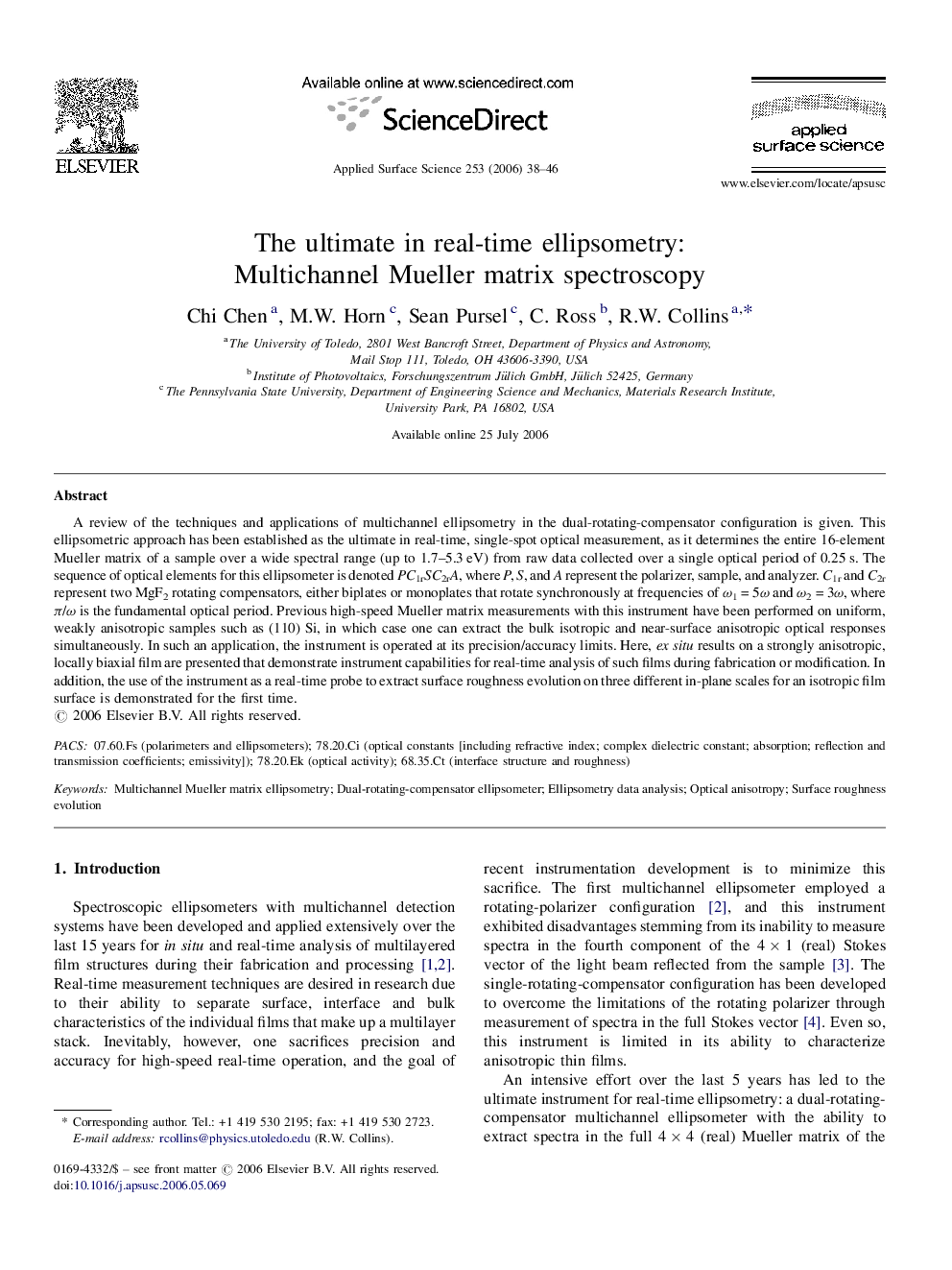| Article ID | Journal | Published Year | Pages | File Type |
|---|---|---|---|---|
| 5368522 | Applied Surface Science | 2006 | 9 Pages |
Abstract
A review of the techniques and applications of multichannel ellipsometry in the dual-rotating-compensator configuration is given. This ellipsometric approach has been established as the ultimate in real-time, single-spot optical measurement, as it determines the entire 16-element Mueller matrix of a sample over a wide spectral range (up to 1.7-5.3Â eV) from raw data collected over a single optical period of 0.25Â s. The sequence of optical elements for this ellipsometer is denoted PC1rSC2rA, where P, S, and A represent the polarizer, sample, and analyzer. C1r and C2r represent two MgF2 rotating compensators, either biplates or monoplates that rotate synchronously at frequencies of Ï1Â =Â 5Ï and Ï2Â =Â 3Ï, where Ï/Ï is the fundamental optical period. Previous high-speed Mueller matrix measurements with this instrument have been performed on uniform, weakly anisotropic samples such as (110) Si, in which case one can extract the bulk isotropic and near-surface anisotropic optical responses simultaneously. In such an application, the instrument is operated at its precision/accuracy limits. Here, ex situ results on a strongly anisotropic, locally biaxial film are presented that demonstrate instrument capabilities for real-time analysis of such films during fabrication or modification. In addition, the use of the instrument as a real-time probe to extract surface roughness evolution on three different in-plane scales for an isotropic film surface is demonstrated for the first time.
Keywords
Related Topics
Physical Sciences and Engineering
Chemistry
Physical and Theoretical Chemistry
Authors
Chi Chen, M.W. Horn, Sean Pursel, C. Ross, R.W. Collins,
